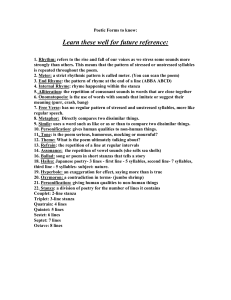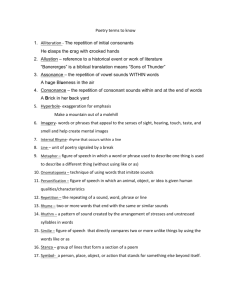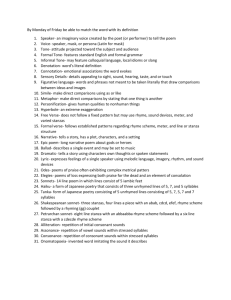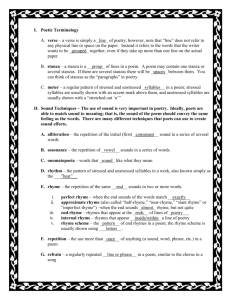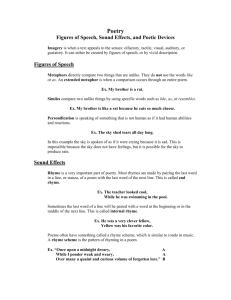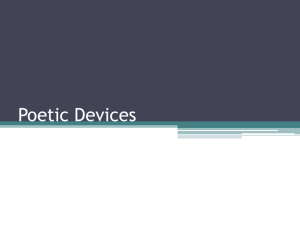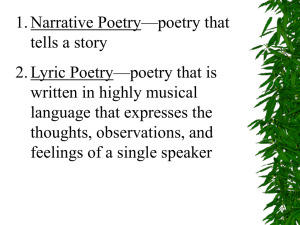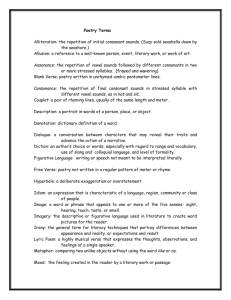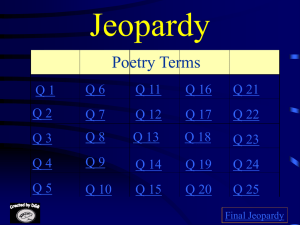repetition - TeacherWeb
advertisement
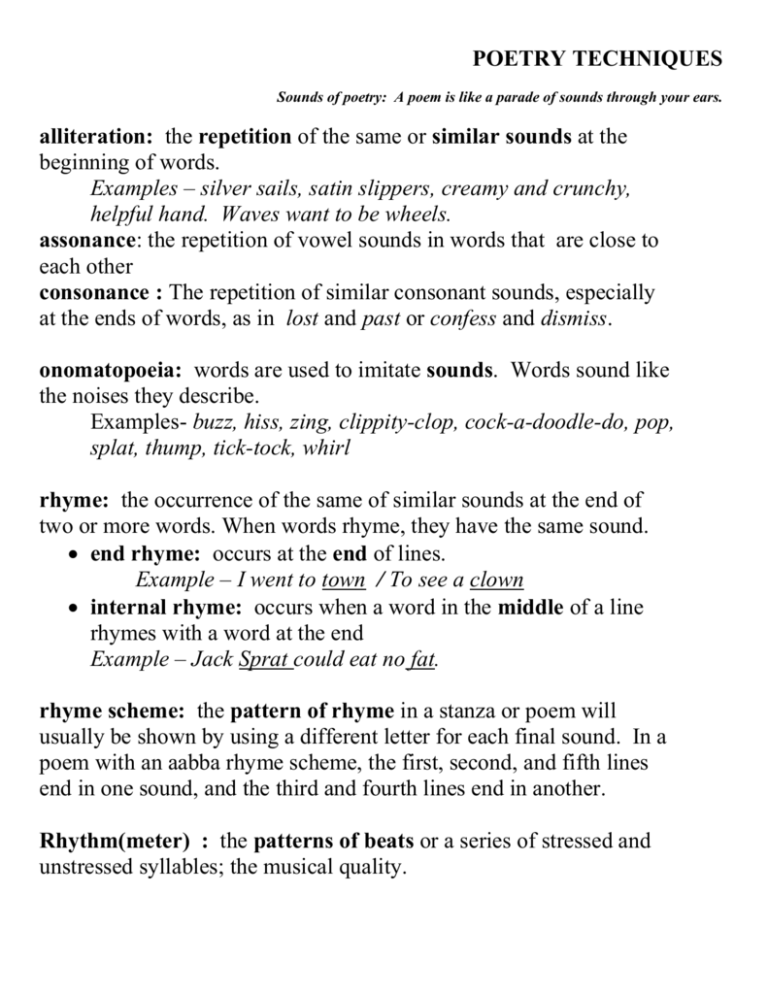
POETRY TECHNIQUES Sounds of poetry: A poem is like a parade of sounds through your ears. alliteration: the repetition of the same or similar sounds at the beginning of words. Examples – silver sails, satin slippers, creamy and crunchy, helpful hand. Waves want to be wheels. assonance: the repetition of vowel sounds in words that are close to each other consonance : The repetition of similar consonant sounds, especially at the ends of words, as in lost and past or confess and dismiss. onomatopoeia: words are used to imitate sounds. Words sound like the noises they describe. Examples- buzz, hiss, zing, clippity-clop, cock-a-doodle-do, pop, splat, thump, tick-tock, whirl rhyme: the occurrence of the same of similar sounds at the end of two or more words. When words rhyme, they have the same sound. end rhyme: occurs at the end of lines. Example – I went to town / To see a clown internal rhyme: occurs when a word in the middle of a line rhymes with a word at the end Example – Jack Sprat could eat no fat. rhyme scheme: the pattern of rhyme in a stanza or poem will usually be shown by using a different letter for each final sound. In a poem with an aabba rhyme scheme, the first, second, and fifth lines end in one sound, and the third and fourth lines end in another. Rhythm(meter) : the patterns of beats or a series of stressed and unstressed syllables; the musical quality. refrain: a line or group of lines that is repeated throughout a poem, usually after every stanza. repetition: the repeating of a word, sounds, or phrases to add rhythm or to focus on an idea. stress: the prominence or emphasis given to particular syllables. Stressed syllables usually stand out because they have long, rather than short, vowels, or because they have a different pitch or are louder than other syllables. IMAGERY in POETRY Painting with Words allusion: a reference to a famous person, place, event, or work of literature or art imagery: language that appeals to the five senses – sight, hearing, smell, taste, and touch; sensory details. idiom: common phrase made up of words that can’t be understood by their literal, or ordinary, meanings. Example – cat got your tongue, frog in my throat. oxymoron: a seeming contradiction of two words put together (jumbo shrimp). figurative language: language that has meaning beyond the literal meaning; also known as “figures of speech.” --you have to figure out the meaning simile: comparison of two things using the words “like” or “as,” e.g., “Her eyes were as sparkly as diamonds.” metaphor: direct comparison between two things. It does not use “like” or as,” e.g., “Her eyes were diamonds.” hyperbole: a purposeful exaggeration for emphasis or humor. Example – tons of money, waiting for ages, a flood of tears. personification: human qualities given to an animal, object, or idea, e.g. The wind exhaled. The sky is crying. Dead leaves dance in the wind. Blind justice.
